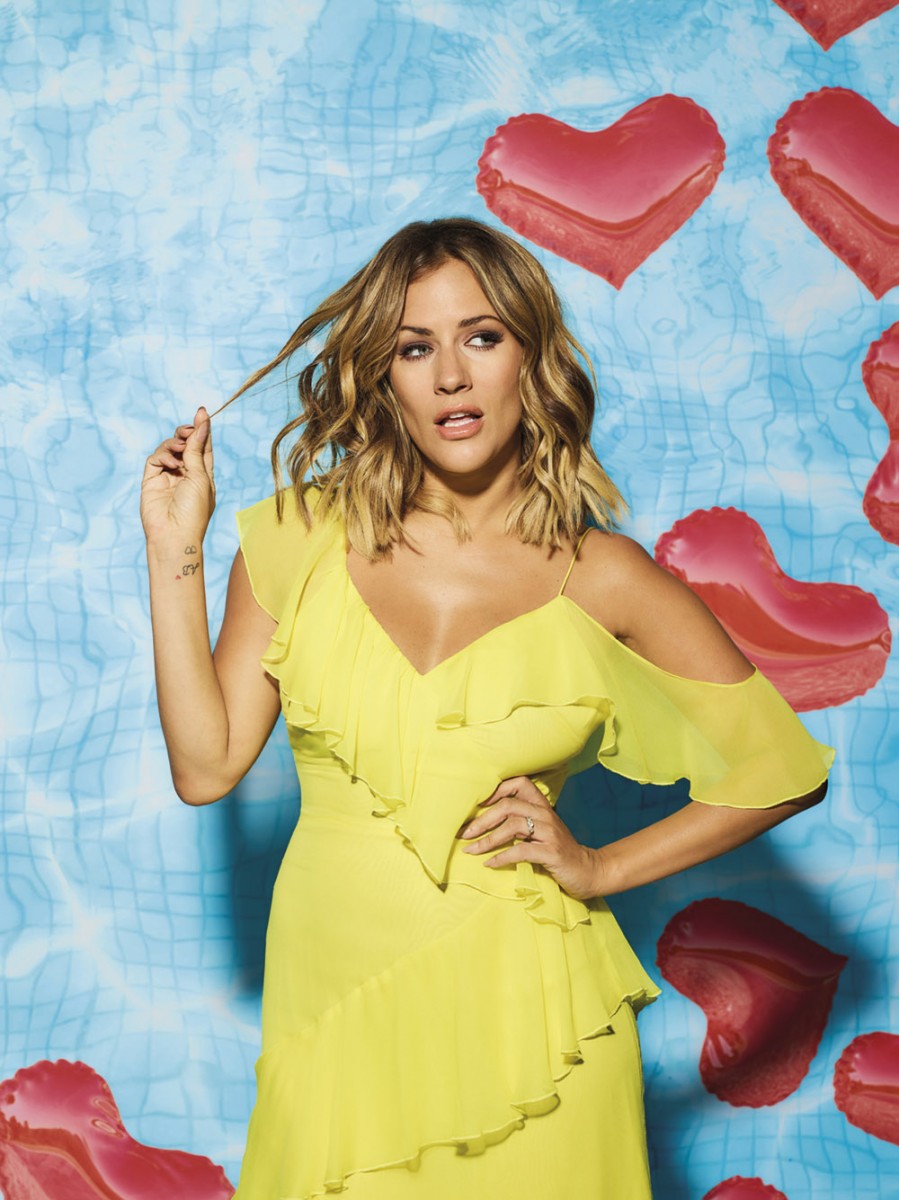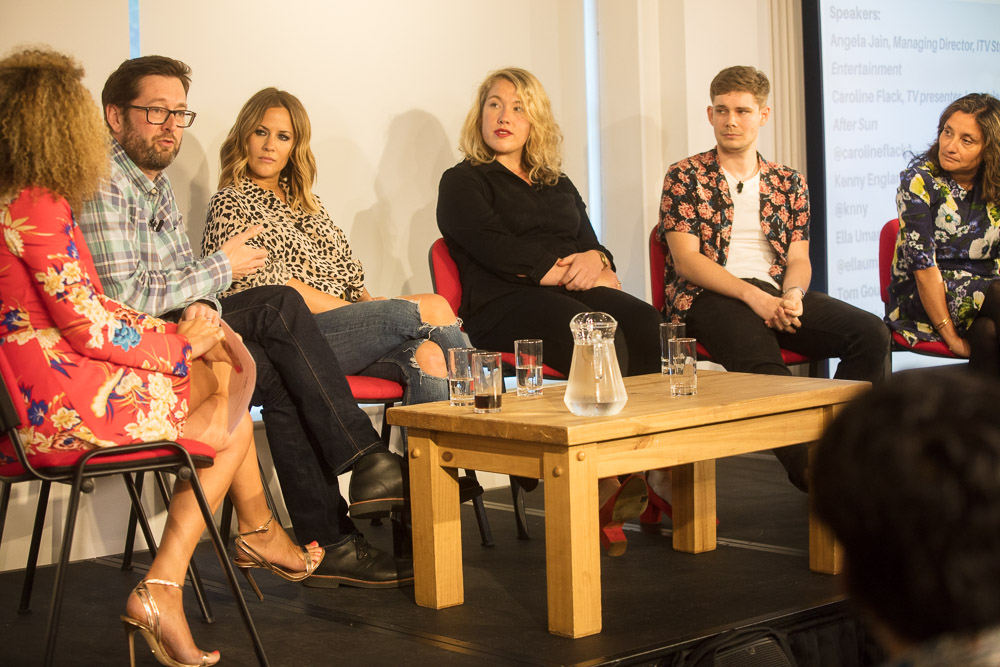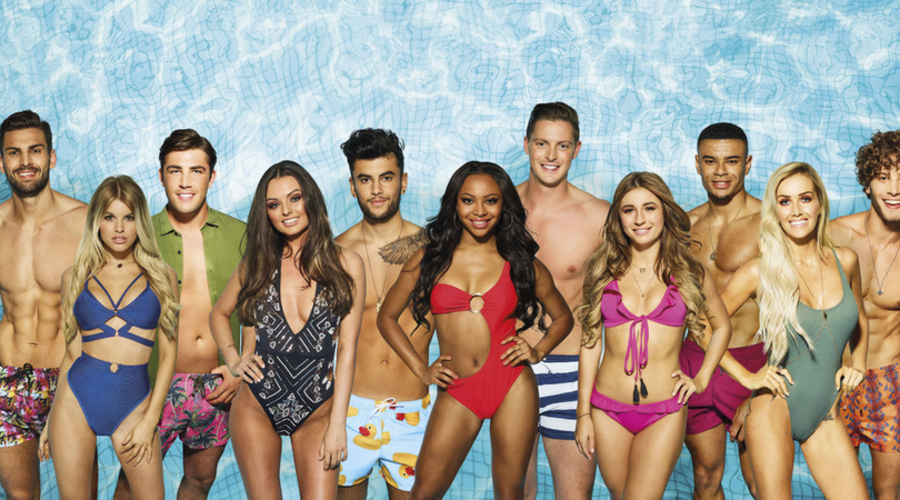Love Island was the surprise hit of summer 2017. Matthew Bell dons the sun cream to hear an RTS panel dissect the show’s appeal
Last year, UK audiences enjoyed a summer fling with Love Island and its cast of scantily clad young men and women looking for love – and a £50,000 prize. Millions tuned in to ITV2, attracted to a show that ran the gamut of taste, from boy-meets-girl, feelgood telly to under-the-duvet sex. Love Island launched in 2015 and performed respectably. But it was in 2017 that the programme took off, becoming one of the surprise hits of the year. Audiences for series 3 averaged 2.5 million – a huge following for a niche network – as the show made ITV2 the most popular digital channel for 16- to 34-year-olds.
In an era when young people are widely thought to shun traditional TV, this was no mean feat. “It’s a show that has drawn an audience back to linear TV,” claimed executive producer Tom Gould. “It’s social media, it’s being part of the conversation, that has drawn people to watch it live.”
“This is a real case study for all of those naysayers who claim that 16-to-34s don’t watch TV. That’s bollocks, isn’t it, because they’re watching this,” added Angela Jain, MD of ITV Studios Entertainment, which makes the show in tandem with Motion Content Group.
The critics loved it, too – Love Island won prizes at both this year’s RTS and Bafta awards.
It should, however, be pointed out that some commentators thought it exploitative: they argued that this was yet another reality show setting up its mainly working-class cast for a stiff dose of TV mockery.
Jain and Gould were part of a panel at an RTS early-evening event, brought together to discuss Love Island’s success ahead of the reality show’s 2018 series.
“I knew that, if we could get it right, it could be ITV2’s Big Brother"
Having left E4 to run ITV’s digital channels in 2011, Angela Jain had been seeking a new entertainment format.
As a former commissioner of Big Brother, she told the capacity crowd that she understood “the value of having a really chunky show and what it does to your schedules”.
She called in a few indies to pitch their ideas and gave the green light to Love Island. “I knew that, if we could get it right, it could be ITV2’s Big Brother.
And, of course, last year it actually beat Big Brother,” she said.
It has been a remarkable turnaround for a format that first surfaced in 2005, as ITV’s Celebrity Love Island, survived for one more series as Love Island, and then sank.
“When we started to think about what the show should be in 2015, we knew it had to be something completely different – it is [the same] in name only,” explained Gould.

Caroline Flack, a hugely experienced presenter of shows such as I’m a Celebrity… and The Xtra Factor, signed up to host Love Island. She also presents the weekly spin-off programme, Love Island: Aftersun. “As a host, to present something you would also watch religiously – that’s the dream,” she said. “It was my perfect job.”
Nevertheless, success was elusive. “If anyone remembers the first series, that was not a hit out of the park at all. It could so easily have got cancelled,” recalled Jain. Love Island survived the commissioners’ cull and began to find an audience. “By the end of series 2 it was getting there, and people came back to series 3 and brought their friends,” noted Gould.
Getting the show to the screen was a Herculean task, which needed a crew of 200 to complete. Some 12 edit suites ran 24 hours a day, working through the pictures captured by 70 fixed cameras.
"It feels authentic – the 16-34 audience is incredibly savvy and aware of anything that feels fake”
“It’s mammoth – you can’t deliver 42 episodes of the show unless you’ve got a machine making it happen,” said Jain. She denied that Love Island had become “too big” for ITV2. “It’s a perfectly formed show for ITV2. It hits its key demographic. It is the very biggest show on exactly the right channel.”
However, she was unable to rule out a move to ITV’s main channel: “Where it goes and who decides what they want to do with it is out of our control. It does feel like a perfect fit at the moment.”
Reflecting on Love Island’s appeal, Gould said: “The audience watches it and recognises scenarios on the show from their own lives – that’s a big part of it. It feels authentic – the 16-34 audience is incredibly savvy and aware of anything that feels fake.”
Gould also pointed to the show’s “unpredictability” and “constant stream of drama”, as well as the casting of its contestants, who are competing to be the last couple left in the villa in Majorca.
“At the back of your mind, you have to be thinking, ‘We are matchmaking.’ And, as with any reality show, you are looking for big personalities,” said Gould. “You are also looking for people who you think are going to be open and honest about their feelings, and that’s much harder that it sounds.”
Jain identified “wit, humour and Iain [Stirling’s] voiceover” as other key elements in the show’s success. Ahead of the launch of series 4 in early June, Jain said: “We all feel confident – we sort of know what we’re doing.… We want to give the viewers more of what they’re expecting, but, equally, you don’t want to deliver the same show again.
“Having a different cast will create different stories and, of course, we’ll have some tricks up our sleeves."
‘Love Island: Anatomy of a hit’ was held in the Auditorium at Foyles in central London on 23 May. The RTS event was chaired by Ria Hebden and produced by Vicky Fairclough and Sarah Booth.
Question & Answer

Is there an appetite for a gay Love Island, and could you produce one?
Angela Jain: Anything is possible. It’s a show that will evolve, live and breathe and change. I hope that [Love Island] is going to be on telly for the next five years at the very least… who knows where it will go?
Has the casting process changed?
Tom Gould: A lot more people applied this year than for series 1, but it’s the same process. [There’s a] conversation with the casting team on the phone, they come in for auditions and we watch the auditions if [the casters] feel they might have someone who’s suitable.… Those that we think look good on tape meet with the execs.
What kind of people are you looking for?
Tom Gould: You need people who will stand out and engage [the audience] and give a lot of themselves. That’s the biggest thing. We have had people in previous series who…, when they’ve got in the villa, haven’t felt that comfortable being open about how they feel and sharing their love lives. It’s a big ask, because it’s a really intense environment.
Angela Jain: We also go and look for people, with targeted casting – we don’t solely rely on applications.… With a returning series, you’re also trying to [militate] against those people who are pitching themselves as a previous islander.
How do you avoid casting people who are looking for fame, not love?
Tom Gould: That’s the beauty of the format – the viewers, I hope, will… work out which [relationships] are real. At the heart of the format is the [question]: who’s there for love and who is playing a game.
Angela Jain: The skill of the casting team comes into play here. They have to suss out whether someone is clearly a wannabe. And we don’t [necessarily] exclude somebody who is a wannabe – because there might be a legitimate reason for them to be on the show.
How do you use the games and challenges in the show?
Tom Gould: We go into a [series] with a bank of ideas and challenges… that we think may, at some point, be the right thing to throw in.… Ultimately, everything is justified because [the show] is about testing relationships.… We tell all the people that we cast beforehand: “You will be tested. [The show] is not about sitting in a villa sunning yourselves for seven or eight weeks.”
Love Island’s digital strategy
Love Island has invested heavily in social media to engage and build audiences. So much so that, during series 3, it received more than 2 billion Twitter impressions.
The digital team – led by senior digital producer Kenny England – and the TV production team ran side-by-side on Love Island. ‘I’ve never worked on a show where the digital team has been so firmly embedded,’ said executive producer Tom Gould.
‘[They] approach [programme-making] from a different point of view, and that’s not a point of view that I have that much experience of. That dialogue between Kenny’s team and us as a group of execs and producers is so valuable.’
The programme’s app, through which the public has its say about the competing couples on the show, is another ‘huge part of the series’, said England.
‘When you’re working in social media, there’s so much noise,’ he said. The app, however, puts the show in contact with its ‘super fans, who can consume everything [about the show] in the one place, undistracted, [and] vote.’
Destined to be a global brand?
The Love Island format has been sold around the world, including to Australia and Germany. ‘It can [work] for everyone,’ claimed ITV Studios head of format support Ella Umansky.
A clip from the German version was shown at the RTS event. It featured much the same tattooed beefcakes and tanned babes as the original, and demonstrated how easily the format could travel.
‘It’s what you know and love about Love Island, but in German,’ said Umansky. ‘It can be translated, it can be done in different locations to different budgets. It’s a very flexible format.
‘We’re so lucky to have a format like this. It’s really important for ITV as a whole because, as a brand, it’s something that can really define us.
‘A show like this can become your calling card.
‘This is the year when we’re really going to see it, hopefully, become that global brand.’







